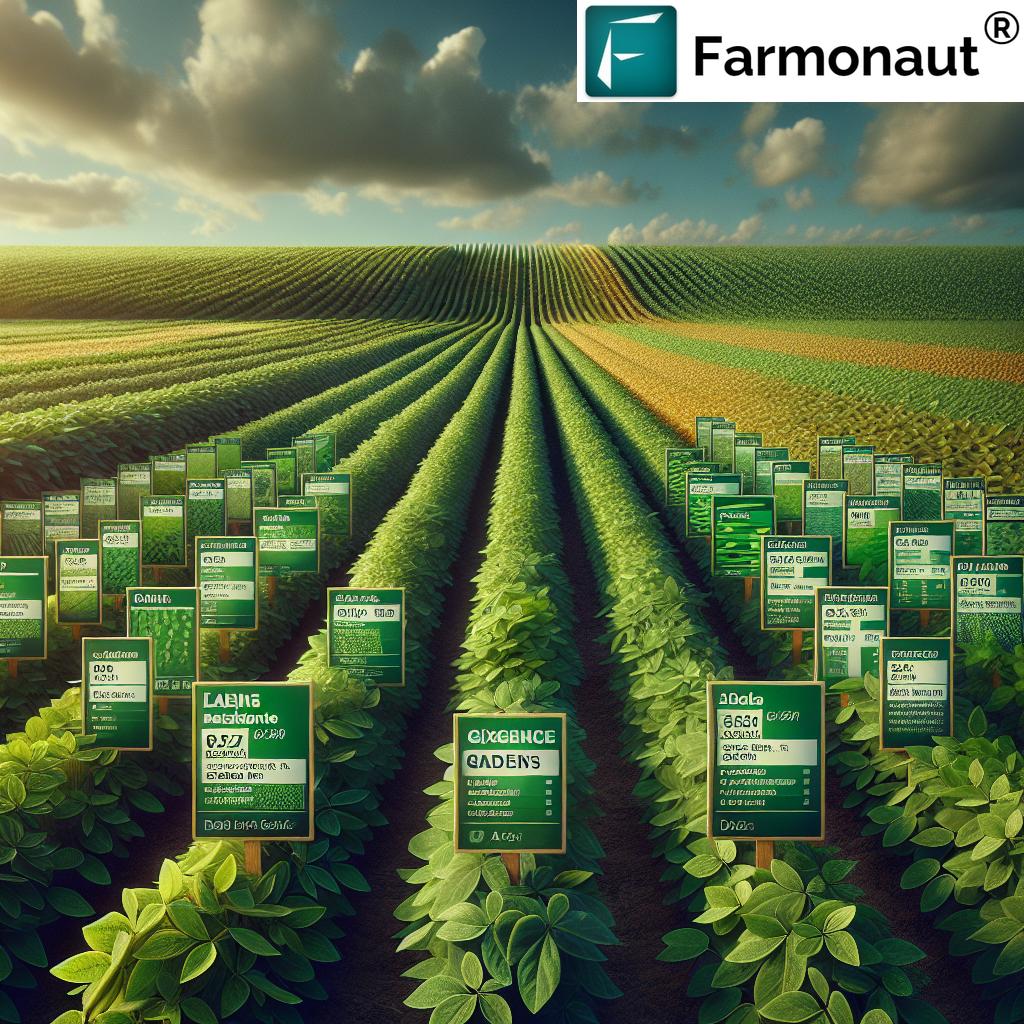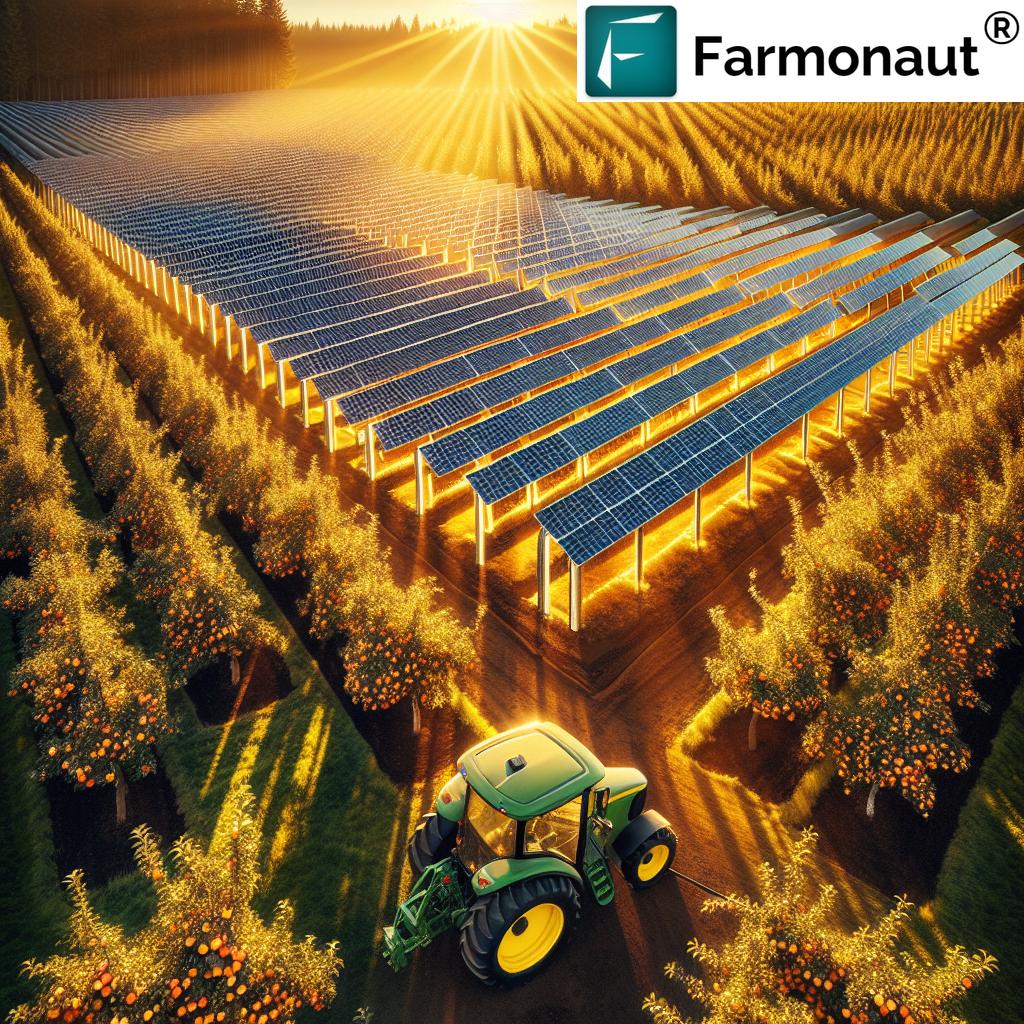United States Innovative Farming: 7 Trends for 2025
“By 2025, over 60% of U.S. farms are projected to adopt precision agriculture technologies for crop management.”
Introduction: United States Innovative Farming 2025
The United States innovative farming sector stands at a momentous crossroads in 2025. Having long held the title of a global leader in agriculture, the United States is combining time-honored farming traditions with a new wave of technology, sustainable practices, and indoor agriculture (United States indoor farming) to meet the demands of a growing population, ever-increasing urban expansion, and a changing climate. In this comprehensive guide, we will explore the seven most influential trends for 2025 that are shaping food production and the future of United States farming.
From precision agriculture technologies driven by AI and satellite imagery to indoor farming systems revolutionizing food security in American cities, the transformation is both far-reaching and deeply practical. This blend of innovation enhances not only the efficiency and yield of farms but ensures that environmental stewardship and sustainability are at the forefront of United States farming strategies.
A Landscape Overview: Farming in the United States
To fully understand the significance of United States innovative farming trends, it helps to appreciate both the expansiveness and diversity of U.S. agriculture.
- U.S. farmland covers roughly 900 million acres—ranging from small family farms to massive operations spanning thousands of acres.
- Crop choice and farm practices vary dramatically based on region, soil type, climate, and market demands.
- Major products include corn, soybeans, wheat, cotton, vegetables, and fruits, as well as world-leading animal husbandry.
Despite such an expansive reach, modern pressures—from urban expansion, regulatory demands, to climate volatility—require continuous innovation and change. Increasingly, United States farming means integrating technology into legacy practices, adopting precision systems, and moving toward sustainable and controlled production environments.
“Indoor farming in the U.S. is expected to grow by 20% annually, revolutionizing sustainable food production by 2025.”
Comparative Table: 7 Trends in United States Innovative Farming for 2025
| Trend | Description | Estimated 2025 Adoption Rate (%) | Key Impact Areas |
|---|---|---|---|
| Precision Technology | Advanced GPS, drones, sensors, and AI to monitor, optimize, and automate farm operations for higher efficiency. | 60+ | Improved yields, reduced resource waste, higher farm profitability. |
| Sustainable Practices | Regenerative agriculture, crop rotation, cover cropping, and reduced pesticide/fertilizer usage for soil and ecosystem health. | 50+ | Climate resilience, soil carbon sequestration, water conservation. |
| Indoor Farming & CEA | Hydroponics, aeroponics, aquaponics, and vertical farms in controlled environments for year-round, resource-efficient production. | 20 | Urban food security, reduced water use, consistent supply. |
| AI & Satellite Data Integration | Real-time remote crop monitoring, predictive analytics, and prescriptive advice apps for farm decision support. | 40 | Yield improvement, pest/disease prevention, risk reduction. |
| Biotechnology & Genetic Engineering | Gene editing (e.g., CRISPR), crop varieties resistant to drought, pests, and disease, with improved nutrition. | 35 | Input reduction, resilience to climate, higher nutritional value. |
| Land Management & Conservation | Easements, rotational grazing, improved irrigation, and conservation programs for ecosystem balance. | 30 | Biodiversity, soil health, water quality, landscape preservation. |
| Digital Platforms & Traceability | Blockchain-based supply chain transparency, resource management apps, satellite-based farm verification for loans/insurance. | 25 | Consumer trust, financial access, transparency, compliance. |
Trend #1: Precision Agriculture Technology in United States Innovative Farming
Precision technology is at the heart of united states innovative farming as we enter 2025, with a focus on maximizing resource use, improving yields, and minimizing environmental impact.
-
Technology stack:
- GPS guidance systems for tractors and equipment
- Drones for remote sensing, crop scouting, and even targeted applications of fertilizers and crop protection
- In-field sensors and IoT devices for tracking soil moisture, temperature, and nutrient levels
- Artificial Intelligence (AI) platforms to analyze massive data sets and provide real-time, farm-specific guidance
-
Benefits:
- Significant reductions in water, fertilizer, and chemical inputs
- Improved planting, irrigation, fertilization, and harvesting timing and accuracy
- Yield boosts thanks to variable rate technology (VRT)—which applies inputs only where needed
- Environmental impact is minimized; carbon footprint is lowered
These advances make precision farming increasingly accessible for American farmers of all sizes—including those with small or mid-sized operations. The result is a more resilient, data-driven agriculture system that both meets consumer demand and preserves resources.
Explore how real-time satellite-based crop health monitoring can support agribusinesses and individual farmers toward a more sustainable, ROI-driven path in Farmonaut’s Large Scale Farm Management platform.
Trend #2: Sustainable Practices and Regenerative Agriculture
Sustainability is no longer optional. Regenerative agriculture is widely viewed as the future of united states farming. These practices not only sustain production but aim to improve soil health, increase biodiversity, and sequester carbon—all while reducing inputs and environmental impact.
- Cover cropping: Planting non-commodity crops in-between main crops to protect and enrich the soil, reduce erosion, and add organic matter.
- Reduced tillage: Means less soil disturbance, improved water retention, and enhanced soil microbial activity.
- Rotational grazing & crop rotation: Rotating animal and crop systems helps balance land use, manage pests, and foster soil health.
- Carbon sequestration: Adopting practices that draw carbon out of the air and store it in soil—mitigating climate change.
- Eco-friendly pest management: Relying less on chemical pesticides and more on integrated systems using beneficial insects, trap crops, and biologicals.
As a vital tool, Farmonaut’s Carbon Footprinting enables commercial producers to track and reduce their environmental impact with scientific precision—helping U.S. farms reach compliance, report on sustainability, and contribute to climate resilience.
This adoption of regenerative and sustainable practices is being driven forward not just by environmental regulations, but also by consumer demand for sustainably produced food. More than ever, farmers see these systems as an economic and ecological opportunity.
Trend #3: United States Indoor Farming & Controlled Environment Agriculture
United States indoor farming, especially in metropolitan areas, is expected to redefine food security and sustainability by 2025. Rapid advances in vertical farming, hydroponics, aeroponics, and aquaponics make it possible to:
- Grow crops year-round—regardless of climate or season
- Reduce water usage by up to 90% compared to traditional agriculture
- Decrease the carbon footprint by producing food close to urban centers, minimizing transport
- Increase local food security for cities such as New York, Los Angeles, and Chicago
- Enable pesticide-free production
With the annual growth of U.S. indoor farming exceeding 20%, we see innovative farms integrated into buildings, warehouses, and even mobile trucks.
Increased efficiency and urban proximity reduce food miles and meet consumer demand for fresh, local, and sustainably produced crops.
For urban farms, tailored crop monitoring and indoor environmental controls are made possible with digital solutions and actionable analytics, such as the Farmonaut Mobile & Web App—designed to streamline decision-making and maximize yields in controlled environments.
Trend #4: Artificial Intelligence, Satellite & IoT in Farm Management
Next-generation United States Innovative Farming is largely driven by data—captured, analyzed, and delivered by a blend of satellite technology, artificial intelligence (AI), and IoT sensors.
- Satellites: Monitor vast acreages efficiently, offering insights into crop health, soil moisture, and growth stages in real-time.
- AI-powered analytics: Predict pest outbreaks, suggest optimal irrigation timing, and identify inefficiencies from massive, ever-growing datasets.
- Weather integration: Hyperlocal, field-specific weather forecasts underpin more proactive decision-making.
- Blockchain traceability: Guarantees transparency and authenticity from farm to fork.
The carbon footprint tracking functionalities and traceability solutions offered by Farmonaut directly align with the sustainability and traceability drives discussed earlier.
Our Jeevn AI advisory system brings personalized, real-time insights to U.S. farmers, enabling them to increase productivity, improve resource management, and prepare for climate challenges ahead.
The Farmonaut API and Developer Docs make it easy for agritech developers to bring advanced, satellite-enabled features into their own digital platforms—driving broader innovation in U.S. agriculture.
Trend #5: Genetic Engineering & Biotechnological Developments
By 2025, biotechnology and genetic engineering are not only accepted but championed in American farming for their potential to meet new climate and food security challenges.
- CRISPR and gene-editing: Precisely alter genetic codes to produce drought-resistant, pest-resilient, disease-resistant, and enhanced-nutrient crops.
- Biodiversity preservation: Development of novel crop varieties to diversify U.S. food systems and ensure resilience amidst changing conditions.
- Reducing chemical dependency: Engineered crops require fewer pesticides and fertilizers, supporting sustainable production.
Such advances permit American farmers to adapt and reduce risk, ensuring food production remains robust despite shifting weather patterns or biothreats.
For a closer look at resource monitoring aligned with biotech-driven farming, see the Farmonaut Carbon Footprinting page.
Trend #6: Sustainable Land Management & Stewardship
America’s farmland—covering roughly 900 million acres—is a cornerstone of food security and rural economies, yet under constant pressure from urban expansion and environmental regulations. Sustaining these lands for the long term is driving several innovations:
- Land conservation easements: Legally protect farmland for agricultural use, preventing urban encroachment and supporting biodiversity.
- Government and private stewardship incentives: Subsidies and grants reward farmers who implement soil conservation, cover cropping, and improved irrigation systems.
- Rotational grazing and diversified cropping: Rotational systems improve soil structure, foster healthy ecosystems, and reduce disease buildup.
- Water retention practices: Advanced irrigation management helps conserve vital resources, improve crop resilience, and reduce runoff.
Many of these management practices are tracked through digital platforms, including Farmonaut Large Scale Farm Management, which can aid in compliance, certification, and reporting for both private and government programs.
Trend #7: Digital Platforms, Traceability & Finance Access
As the U.S. food system grows in complexity, both producers and consumers increasingly demand farm-to-fork transparency, effective resource management, and simplified access to finance.
- Blockchain-based product traceability: From seed to shelf, consumers can verify food origin, sustainability, and authenticity.
- Digital resource and fleet management ensures that farm fleets, inputs, and outputs are efficiently tracked and optimized.
- Satellite-based farm verification: Used in crop loans and insurance to reduce fraud and expand access to credit, especially for smallholders.
Our Product Traceability solutions and Crop Loan & Insurance services empower farmers, lenders, and the wider food sector to foster trust, risk reduction, and financial security.
The Future Outlook: American Farming Beyond 2025
As we look past 2025, United States innovative farming will continue to blend technology, sustainability, and adaptability to meet domestic and global food challenges. Key drivers shaping this resilient future include:
- Increased investment in agri-tech infrastructure—backed by government and private sector alike
- Consumer-driven demand for organic, local, and traceable food
- Enhanced support for small and mid-sized farms adopting digital and sustainable practices
- Ongoing collaboration between research institutions, agribusinesses, and technology providers
- Rigorous climate adaptation: drought, pest, and disease-resilient crop development and land use policies
Through these innovations, the United States stands at the intersection of agricultural tradition and modern advancements—reshaping what it means to grow, manage, and enjoy food sustainably at scale.
Farmonaut: Satellite-Driven Precision for a Resilient Future
At Farmonaut, we believe that precision agriculture should be affordable, scalable, and accessible to all farmers—from expansive U.S. operations to emerging agribusinesses worldwide.
-
Technologies:
-
Satellite-based crop health monitoring—
We bring real-time NDVI and soil analysis to the palms of farmers via Android, iOS, Web, and API, unlocking actionable insights for irrigation, fertilizer optimization, and pest management. - Jeevn AI advisory system—An always-on personalized advisory helping farmers make better decisions using satellite data and weather analytics.
- Blockchain-powered traceability—Ensures American and global food supply chains are transparent, secure, and trusted, from farm to consumer.
- Carbon foot-printing—Supports compliance and climate action with rigorous tracking and reporting features.
- Logistics & fleet management—Optimizes farm transport, equipment, and operational resources.
-
Satellite-based crop health monitoring—
-
Accessible Subscriptions:
Farmonaut offers a flexible, subscription-based model suitable for small, mid-sized, and large U.S. agribusinesses. Our services are not limited by geography or scale—enabling end-to-end management from smartphones or desktops. -
API for Custom Innovation:
Your agritech product or service can instantly leverage advanced remote crop health data, blockchain traceability, weather insights, and more via the Farmonaut API and Developer Documentation. -
Value for Every Stakeholder:
- Farmers—make proactive decisions and reduce costs
- Agribusiness—scale up and manage operations across thousands of acres
- Governments & NGOs—streamline farm monitoring for programs and subsidy distribution
- Financial Institutions—speed up loan & insurance processing and reduce fraud risk
- Corporates—increase supply chain transparency and sustainability
Farmonaut Subscription Pricing Plans
Discover affordable and comprehensive solutions for your farm management, data needs, and compliance requirements:
Frequently Asked Questions (FAQ): United States Innovative Farming 2025
What is driving innovation in United States farming?
United States farming is propelled by advances in precision technology (GPS, drones, sensors, AI), biotechnology (gene-edited crops), and a push toward sustainable land management and indoor agriculture. Consumer demand for traceable, sustainable food and pressure from environmental conditions and regulatory policies are central drivers.
What is the role of indoor farming in U.S. food production?
United States indoor farming encompasses vertical, hydroponic, and controlled environment systems for consistent, year-round production. By 2025, indoor farming is projected to grow 20% annually, increasing urban food security and enabling more efficient resource use, especially water conservation.
Are sustainable and regenerative practices cost-effective for small U.S. farms?
Yes. Regenerative agriculture practices—such as cover cropping, reduced tillage, and rotational grazing—are increasingly accessible and offer long-term savings by reducing input costs, improving soil health, and qualifying farms for carbon credits and green finance.
How does satellite and AI technology support farm management?
Satellite and AI-powered solutions monitor crop health, forecast yield, predict pest outbreaks, and optimize resource application, enabling farmers to make data-driven decisions and improve returns.
Explore Farmonaut’s platform for robust AI and satellite farm management tools on any device.
How does blockchain-based traceability benefit consumers?
Blockchain enhances confidence by recording every step in the supply chain, ensuring consumers can verify food origin, quality, and sustainability practices. See Farmonaut Product Traceability for more.
Can Farmonaut solutions be integrated into existing agtech platforms?
Absolutely. Our platform provides rich API access and documentation, allowing for seamless integration into business or research applications.
What is the future of American agriculture beyond 2025?
U.S. agriculture will remain dynamic—balancing tradition with innovative advancements like precision tech, indoor farming, regenerative practices, and digital traceability. As consumer expectations rise, farmers adopting these trends will be best positioned for profitability, environmental compliance, and leadership in global food production.
Conclusion: A Dynamic Path Forward
United States innovative farming in 2025 integrates the very best of agricultural science, digital precision, resilient land stewardship, and consumer-minded food systems. By focusing on these seven key trends—precision technology, sustainable and regenerative practices, indoor farming, AI and satellite systems, biotechnology, advanced land management, and digital traceability—American farms are set to thrive, feeding both urban and rural populations efficiently and responsibly for decades to come.
We, at Farmonaut, remain committed as a platform and technology provider to helping farms across the United States and globally to adopt, scale, and profit from this new era of innovation and sustainability. Ready to join the next wave of farming?













